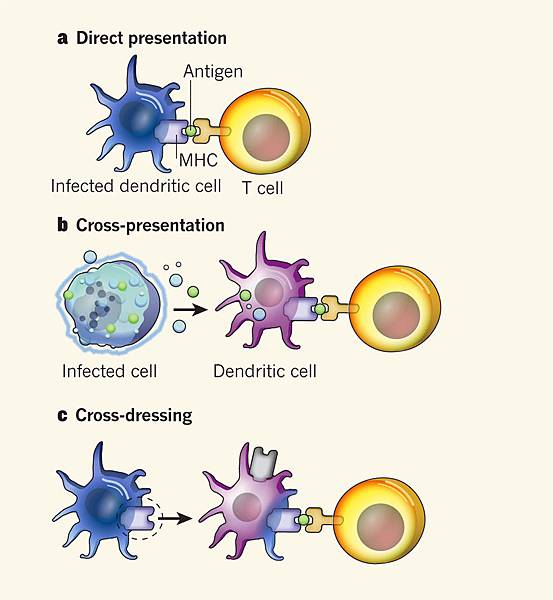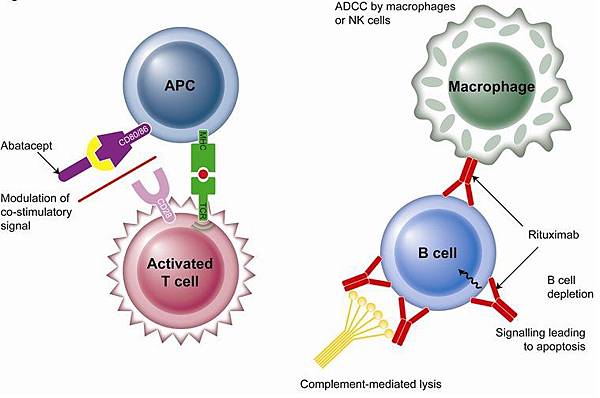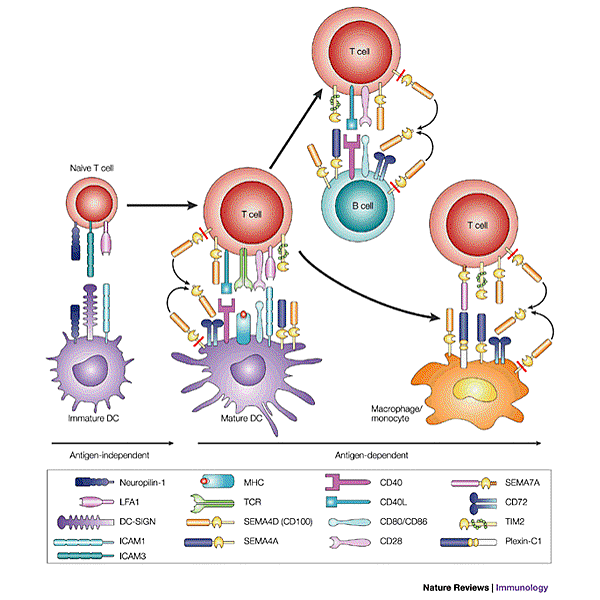














APC:Antigen-presenting cell
An Antigen-presenting cell(APC)or Accessory cell is a cell that displays foreign antigens complexed with Major histocompatibility complexes(MHC's)on their surfaces. T-cells may recognize these complexes using their T-cell receptors(TCRs). These cells process antigens and present them to T-cells.
APCs fall into two categories:professional or non-professional.
T cells cannot recognize, and therefore cannot respond to, 'free' antigen. T cells can only 'see' an antigen that has been processed and presented by cells via carrier molecules like MHC and CD1 molecules. Most cells in the body can present antigen to CD8+ T cells via MHC class I molecules and, thus, act as "APCs"; however, the term is often limited to specialized cells that can prime T cells(i.e., activate a T cell that has not been exposed to antigen, termed a naive T cell). These cells, in general, express MHC class II as well as MHC class I molecules, and can stimulate CD4+(helper)cells as well as CD8+(cytotoxic)T cells, respectively.
Almost all nucleated cells express MHC class I receptors, including professional APCs. If a virus infects a macrophage or dendritic cell, it will try to promote its own destruction through cytotoxic T cells. However, dendritic cells can ingest viruses through pinocytosis and therefore activate the adaptive immune response to create antibodies for the virus through class II MHC receptors.
To help distinguish between the two types of APCs, those that express MHC class II molecules are often called professional antigen-presenting cells.



 留言列表
留言列表
